Choosing the right hiking boots is probably one of the most important gear decisions you can make. That may sound a little extreme, but choose the wrong boot and your hike might be plagued by blisters, sore feet, aching legs and an increased chance of injury.
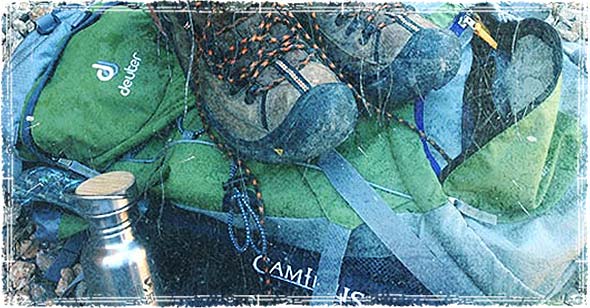
Picking the right type of hiking boot can make or break your next trip out on the trail.
With so many different options, brands, and styles available, it can be a little overwhelming finding the right hiking footwear to meet your needs. From light-weight trail shoes and runners, to heavy-duty mountaineering boots there are actually several types of hiking footwear that you can choose from.
Types of Hiking Footwear
The type of footwear you buy will depend on a number of factors, but in general you need to consider the type of hiking you will be doing, environmental conditions, pack weight, and your total time out on the trail.
Trail Shoes
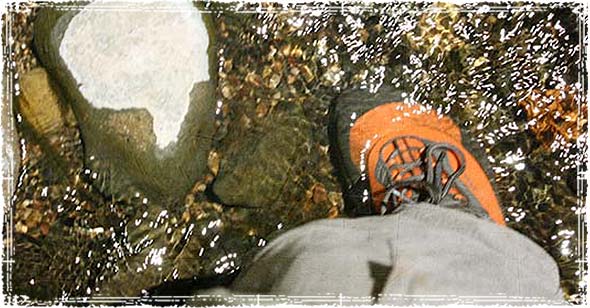
Over the last decade, hiking shoes have become incredibly popular; in fact, they are quickly replacing hiking boots as the number one choice in trail footwear. While trail shoes are not technically hiking boots, they are designed to give you more support than the average sports shoe.
Trail shoes are best suited for short day hikes on well-established trails, when you are carrying a light backpack. They are usually good right out the box, and require little if any breaking in time.
When to Choose this Type of Footwear: Trail Shoes are great for day hikes, general hiking, moderate backpacking, and even long distance lightweight backpacking. They are a great option for those who are hiking in hot and dry climates.
Considerations: The added stability and ankle support will help protect you when hiking through rougher terrain and over rocks. These boots will need some breaking in time, and should be worn for at least a couple of weeks before hitting the trails.
Hiking Boots
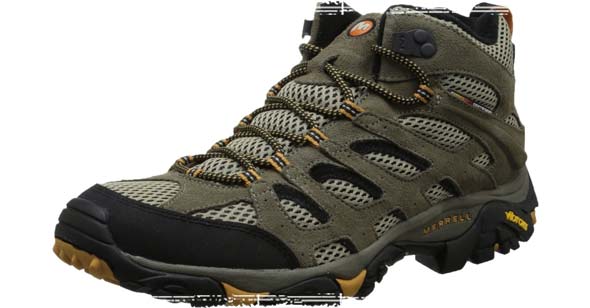
If you plan on encountering rougher than normal terrain, or plan to stay out a little longer than the average day hike, you will need some sturdier, higher-cut hiking boots.
Traditional hiking boots offer better stability and support than hiking shoes; they are a great option for those who are hiking over rough terrain or traveling with heavy packs. Although they are heavier than hiking shoes, the added weight means added durability in rough terrain and a longer lifespan – something that could be a benefit on longer hikes.
When to Choose this Type of Footwear: Hiking boots are great for multi-day hikes, moderate backpacking, off-trail hiking, and long distance backpacking while carrying both light and heavy loads. They are a great option for those who are hiking in areas with weather fluctuations.
Backpacking Boots/Heavy-weight Hiking Boots
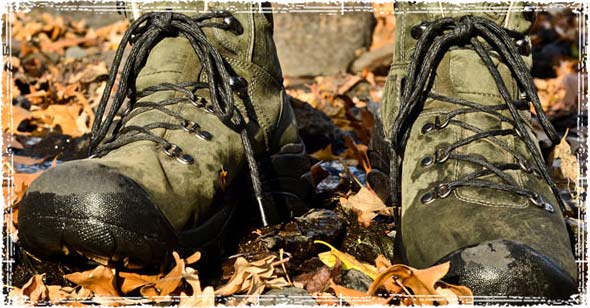
These kinds of boots are generally used for people who are cross-country backpacking, or for those who are going out on very rough terrain. While many people prefer the new lighter boot options, they’re still very popular for those carrying heavy loads through rough terrain.
Considerations: The main thing to remember when picking out your boots is your overall comfort. Don’t let a salesperson talk you into buying the wrong boot. Take your time and really get the feel for the boots before you purchase them. Many dedicated hiking supply stores actually have small little hiking areas set up to help you get a real feel for how the boot performs out on the trail.
If the store doesn’t let you walk around in them, go somewhere else.
Mountaineering Boots
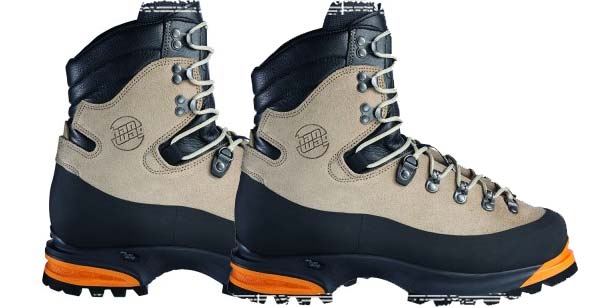
Mountaineering Boots are made for those hiking in very rough high alpine type environments. They are made with full shanks and very stiff soles, something that will keep your feet and ankles protected when mountaineering.
Mountaineering boots usually have multiple layers: an insulated inner lining, a waterproof lining, and full rigid shanks.
When to Choose this Type of Footwear: This style of boot is best suited for mountaineers and ice climbers who spoend much of their time hiking through snow and ice.
Shopping for Hiking Boots
When shopping for boots there are a couple things you need to keep in mind:
- Try to shop in the afternoon. As the day goes on, your foot will naturally swell from walking. By trying boots on later in the day, you can more closely simulate the natural swelling that occurs out on the trail.
- Bring your pack. A good way to get an idea of how your boots will feel out on the trail is to walk around with a full pack. This can help determine if they’ll hold up on a hike.
- Bring your hiking socks. You should also wear the hiking socks that you normally would wear on the trail. Wearing regular work socks doesn’t give you a good idea of how the shoes or boots will actually feel in a real-world situation.
- Spend Time in the Boots. Take some time in the boots and take a walk through the store. If you notice anything that feels odd, or a little pinching in the forefoot, the boot’s not right.
- Keep Terrain in Mind: Hiking boots should be selected based on the most difficult terrain you expect to encounter on your hike.
A little extra time now can save you a lot of pain and misery out on the trail.
Breaking in Your New Boots
Once you find the right pair of boots, break them in slowly. Your new boots will be a little stiff at first, which is fine. But if you feel any pain, you might want to take the boots back now before they cause a problem out on the trail.
There is no fast and easy method when it comes to breaking in new hiking boots.
Start with short indoor sessions, followed by wearing your boots around town or in your yard. Once that feels good, start taking them on short day hikes; then gradually increase the amount of time in the boot.




Nice post..
Sorry for the plug, but REI (I am not an employee and I receive no compensation for this plug) in my opinion is one of the best outdoor gear stores around, with an unconditional guarantee on everything they sell (except trail food).
I had a pair of boots for 3 years that fell apart, they replaced no questions asked, I only had to pay the difference in current cost from when I purchased. SO I got a new $180 pair of boots for $15.
FWIW, I had one pair of their boots that lasted over 15 years… great quality gear.
They have well versed staff that know and use the products they sell, and you can wear the shoes/boots you try on.
Regardless of where you shop, I recommend wearing a liner sock with an outer sock (I do this normally when I go hiking), but that will also help better simulate swollen feet from a long days hike in order to obtain a better fit.
In my opinion Gore-Tex is the eighth wonder of the world. It even works for boots (as long as they are not too worn out). Gore-Tex will allow you to remain comfortable and dry by letting the sweat molecules to go through the Gore-Tex but stopping the big bad water molecules from penetrating the Gore-Tex material. Mr Gore you are the GREATEST tahdah.
My husband and I are wanting to go on a lot of adventures in the mountains this summer, and I want to make sure I have the right gear. It’s good to know that when it comes to choosing the right shoe, it might be good to go with a trail shoe. That way I will be comfortable when we go on day hikes or moderate backpacking trips.
Traditional men’s hiking boots will be something my husband will love for a multi-day hike. In case he goes cross-country backpacking, I buy him some heavy-weight hiking boots online. I’ll try to make sure he gets them in the afternoon so that we can see if it fits him.